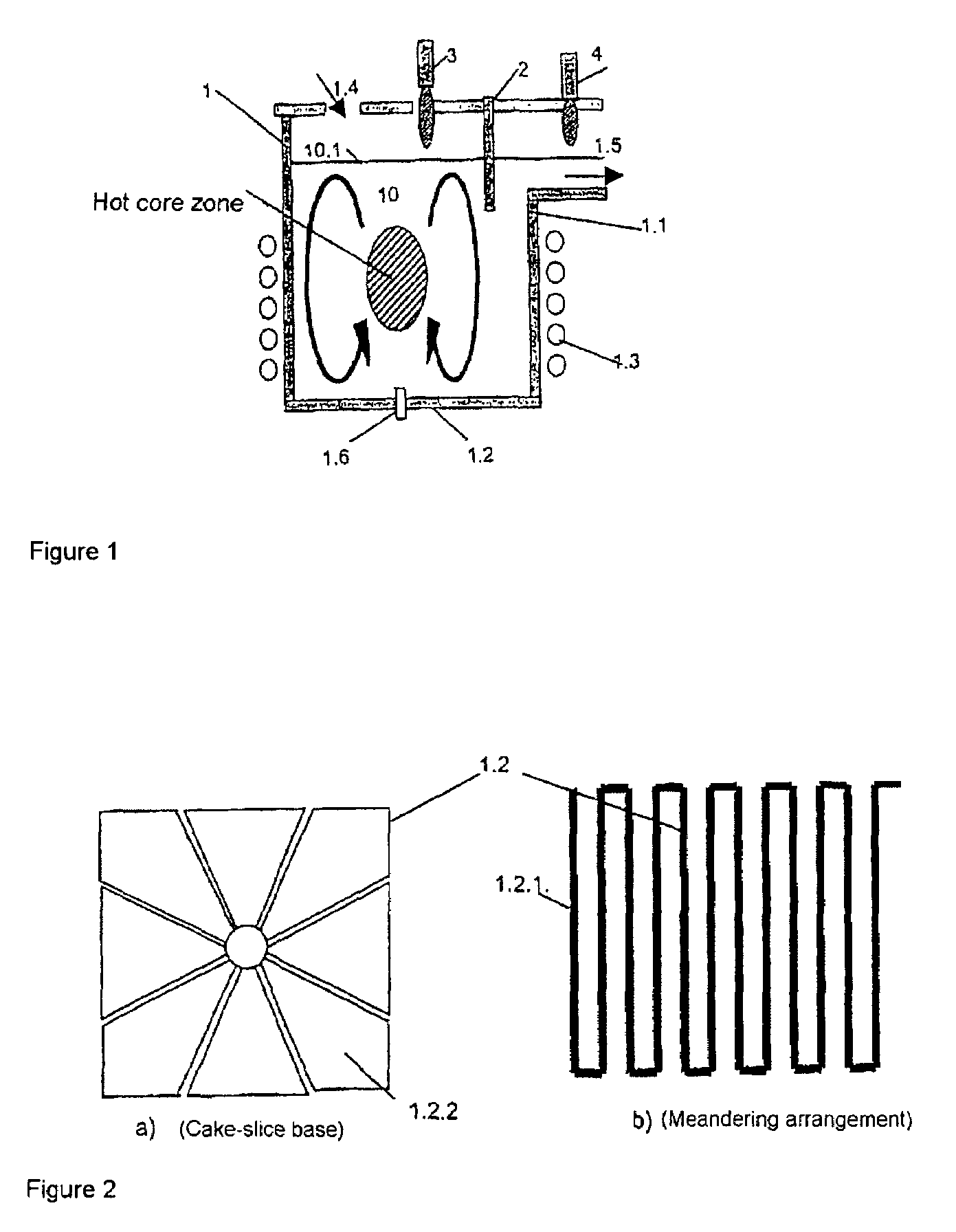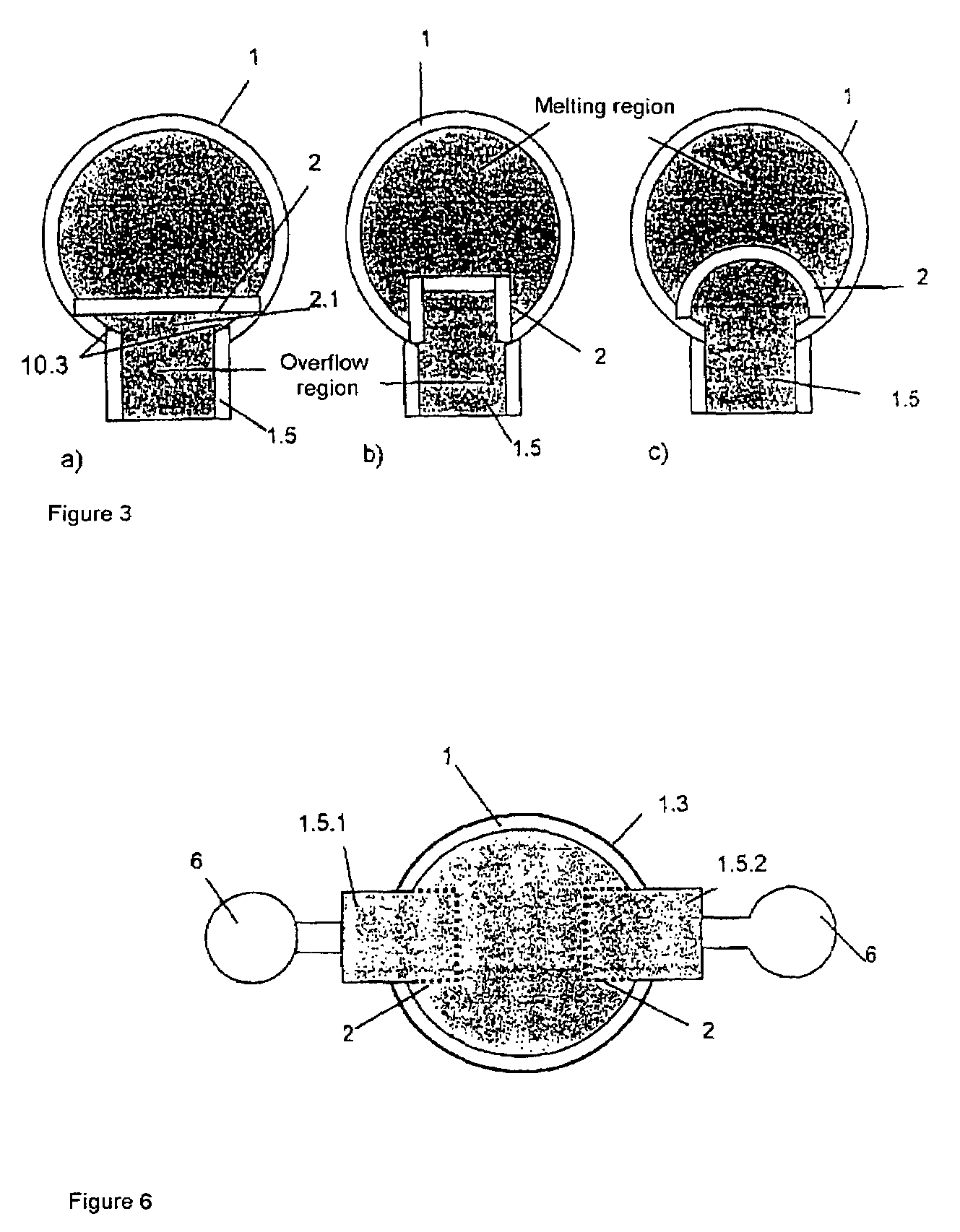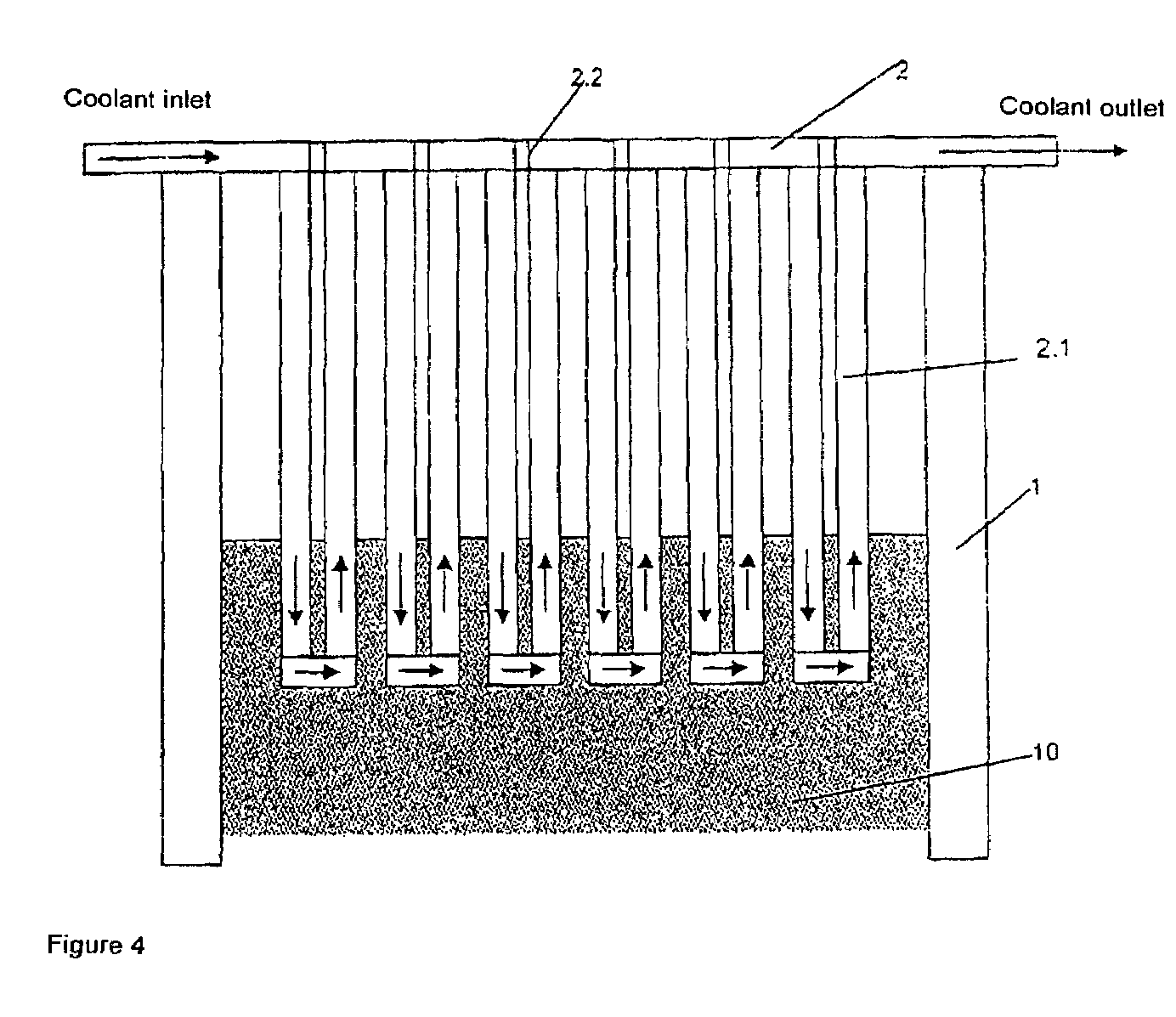Method and device for melting glass using an induction-heated crucible with cooled crust
a technology of induction heating and crucible, which is applied in the direction of glass shaping apparatus, lighting and heating apparatus, furnace components, etc., can solve the problem of not being able to connect the melting crucible to the downstream further processing unit using conventional components, and achieve the effect of boosting the circulation of the entire mel
- Summary
- Abstract
- Description
- Claims
- Application Information
AI Technical Summary
Benefits of technology
Problems solved by technology
Method used
Image
Examples
Embodiment Construction
[0028]FIG. 1 shows a melting apparatus in accordance with the invention, having a skull crucible 1. In the embodiment illustrated, the skull crucible 1 comprises a cylindrical crucible wall 1.1.
[0029]Details of the crucible structure are described below but are not all illustrated in the figure, for the sake of clarity.
[0030]The crucible wall 1.1 is constructed from a ring of vertical metal tubes which are connected to one another at the top and bottom in meandering form. The crucible base 1.2 may likewise comprise metal tubes or segments, or may alternatively be made from refractory material.
[0031]The metal tubes are connected to at least one coolant feed and coolant discharge. The coolant used is generally water. The coolant is guided over a meandering path corresponding to the arrangement of the metal tubes. Depending on the size of the crucible, it is possible to provide a plurality of coolant circuits for cooling individual ring segments. In the base region of the crucible, in ...
PUM
| Property | Measurement | Unit |
|---|---|---|
| volume | aaaaa | aaaaa |
| volume | aaaaa | aaaaa |
| depth | aaaaa | aaaaa |
Abstract
Description
Claims
Application Information
 Login to View More
Login to View More - R&D
- Intellectual Property
- Life Sciences
- Materials
- Tech Scout
- Unparalleled Data Quality
- Higher Quality Content
- 60% Fewer Hallucinations
Browse by: Latest US Patents, China's latest patents, Technical Efficacy Thesaurus, Application Domain, Technology Topic, Popular Technical Reports.
© 2025 PatSnap. All rights reserved.Legal|Privacy policy|Modern Slavery Act Transparency Statement|Sitemap|About US| Contact US: help@patsnap.com



